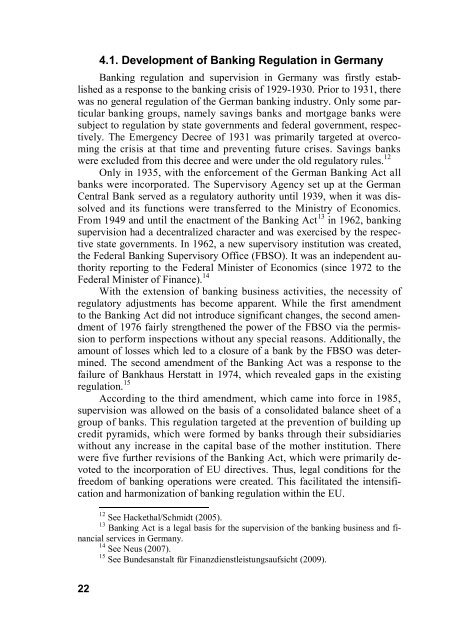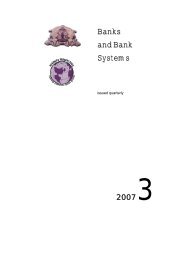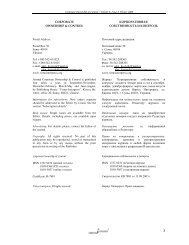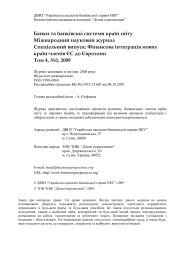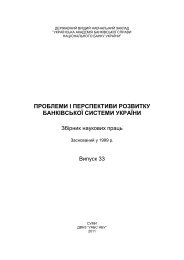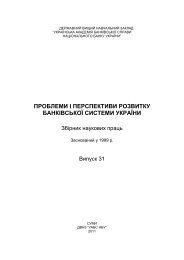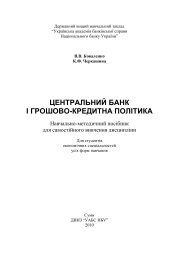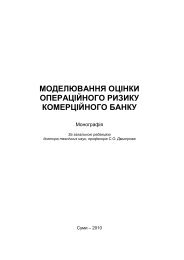BASEL II: PROBLEMS AND USAGE
BASEL II: PROBLEMS AND USAGE
BASEL II: PROBLEMS AND USAGE
Create successful ePaper yourself
Turn your PDF publications into a flip-book with our unique Google optimized e-Paper software.
4.1. Development of Banking Regulation in Germany<br />
Banking regulation and supervision in Germany was firstly established<br />
as a response to the banking crisis of 1929-1930. Prior to 1931, there<br />
was no general regulation of the German banking industry. Only some particular<br />
banking groups, namely savings banks and mortgage banks were<br />
subject to regulation by state governments and federal government, respectively.<br />
The Emergency Decree of 1931 was primarily targeted at overcoming<br />
the crisis at that time and preventing future crises. Savings banks<br />
were excluded from this decree and were under the old regulatory rules. 12<br />
Only in 1935, with the enforcement of the German Banking Act all<br />
banks were incorporated. The Supervisory Agency set up at the German<br />
Central Bank served as a regulatory authority until 1939, when it was dissolved<br />
and its functions were transferred to the Ministry of Economics.<br />
From 1949 and until the enactment of the Banking Act 13 in 1962, banking<br />
supervision had a decentralized character and was exercised by the respective<br />
state governments. In 1962, a new supervisory institution was created,<br />
the Federal Banking Supervisory Office (FBSO). It was an independent authority<br />
reporting to the Federal Minister of Economics (since 1972 to the<br />
Federal Minister of Finance). 14<br />
With the extension of banking business activities, the necessity of<br />
regulatory adjustments has become apparent. While the first amendment<br />
to the Banking Act did not introduce significant changes, the second amendment<br />
of 1976 fairly strengthened the power of the FBSO via the permission<br />
to perform inspections without any special reasons. Additionally, the<br />
amount of losses which led to a closure of a bank by the FBSO was determined.<br />
The second amendment of the Banking Act was a response to the<br />
failure of Bankhaus Herstatt in 1974, which revealed gaps in the existing<br />
regulation. 15<br />
According to the third amendment, which came into force in 1985,<br />
supervision was allowed on the basis of a consolidated balance sheet of a<br />
group of banks. This regulation targeted at the prevention of building up<br />
credit pyramids, which were formed by banks through their subsidiaries<br />
without any increase in the capital base of the mother institution. There<br />
were five further revisions of the Banking Act, which were primarily devoted<br />
to the incorporation of EU directives. Thus, legal conditions for the<br />
freedom of banking operations were created. This facilitated the intensification<br />
and harmonization of banking regulation within the EU.<br />
12 See Hackethal/Schmidt (2005).<br />
13 Banking Act is a legal basis for the supervision of the banking business and financial<br />
services in Germany.<br />
14 See Neus (2007).<br />
15 See Bundesanstalt für Finanzdienstleistungsaufsicht (2009).<br />
22


